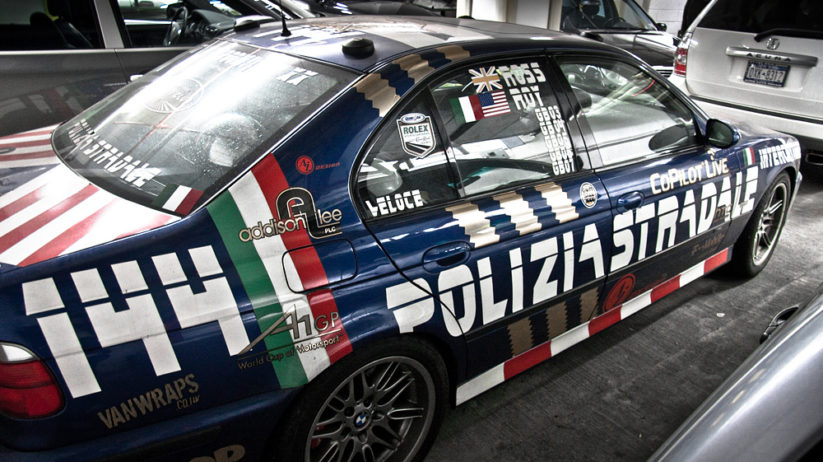
Entering the truck realm, especially in the U.S., many expect a certain level of comfort, tech, and luxury. Yet, truck interiors globally vary widely, exemplified by the 2024 Isuzu D-Max, which lacks amenities U.S. drivers expect, like power windows, passenger airbag, adjustable headrests, shift boot, center console, factory radio, and cruise control.
The only luxury it offers is air conditioning, which is deemed essential in the markets where it is sold. The design of truck interiors around the globe is deeply influenced by regional preferences, regulations, and the specific demands of the environments they are meant to operate within. As we explore these differences, it becomes evident that truck interiors are not merely a matter of aesthetics but are instead a reflection of the functional requirements dictated by local customs and regulations. In the United States, truck interiors are often synonymous with comfort and high-tech features.
American’s Luxurious interior
Think of spacious cabins, advanced navigation systems, and plush seating that can include heated and cooled options. This level of comfort is designed for longer drives and extended time spent behind the wheel. Many American truck drivers view their vehicles as their home on wheels, enhancing the desire for a more luxurious interior. However, in many other countries, the priorities shift significantly. For example, European trucks tend to be designed with a focus on functionality and maneuverability rather than comfort.

The cab-over-engine design, typical in many European models, has its engine situated directly beneath the driver, which maximizes cargo space but can limit cabin comfort. The interior layout often favors practicality over luxury, with essential features for navigation and operation being prioritized over comfort enhancements. This design allows for a shorter overall vehicle length, making it easier to navigate the narrow and often congested streets of European cities. The stark contrast between American and European trucks highlights how regional constraints and lifestyle differences influence vehicle design. In the U. S.
The expansive road networks and longer distances between destinations contribute to the demand for larger, more comfortable interiors. Conversely, European drivers, who may prioritize fuel efficiency and road maneuverability, often end up with less elaborate interiors. Additionally, truck drivers in Europe tend to see their roles as a profession rather than a lifestyle. This perception further influences the design of truck interiors, as comfort and amenities may not be as heavily prioritized compared to American trucks, where the lifestyle aspect is more pronounced.
Unique challenges and solutions in other countries
Moving beyond Europe, countries in Asia and South America present their unique challenges and solutions regarding truck interior design. For instance, in many Asian markets, trucks may be built with an emphasis on durability and utility, often leading to more rugged and utilitarian interiors. The focus here is less about luxury and more about the capacity to withstand tough working conditions and the demands of the job. In South American countries, where road conditions can vary dramatically, trucks are often designed with resilience in mind, leading to a different set of features focused on functionality as opposed to comfort. These differences are not merely anecdotal; they stem from the realities of truck usage in diverse environments.

Environmental factors, such as extreme temperatures, rough terrains, and varying levels of road infrastructure, all play a critical role in shaping the way trucks are designed and equipped. The basics of truck interiors across the globe may come down to a few common threads: durability, functionality, and the ability to cater to the specific needs of that region’s drivers. Exploring the interiors of these trucks may reveal a world where simplicity reigns supreme, tailored to the needs of utilitarian drivers rather than those seeking a plush cabin experience. While it may be easy to scoff at the lack of amenities found in global trucks compared to their American counterparts, it’s essential to appreciate the thoughtful engineering and design tailored to specific markets and user needs. Ultimately, as we look at trucks around the world, we begin to see how much the interior reflects the lifestyle of those who drive them. Understanding these differences is crucial for grasping the larger picture of how vehicles are adapted to meet the needs of drivers across various cultural and geographical landscapes.
The disparities between American trucks and their global counterparts may initially seem jarring, but they provide a fascinating insight into the world of automotive design, functionality, and user experience. As we continue to explore the world of trucks, it becomes increasingly clear that the interior of a truck is much more than mere decor; it serves as a window into the lifestyles and values of the drivers who navigate the varied roads of our planet. With such a complex tapestry of truck designs, it’s no wonder that there’s so much to learn from the interiors of trucks worldwide. Each model tells a story of local culture, regulations, and the choices of drivers, creating a narrative that transcends borders and connects us all through our shared experiences on the road.
In understanding the vast differences in truck interiors around the globe, one cannot overlook the impact of lifestyle and regulations that shape the driving experience. This section delves into how lifestyle choices and regulatory frameworks influence the design of truck interiors, making them unique to their respective regions. Focusing on these aspects reveals not only the diversity of truck interiors but also the underlying reasons for their distinct features.

The heart of the differences in truck interiors
At the heart of the differences in truck interiors is the lifestyle of the drivers themselves. In the United States, trucking often transcends being a mere profession; it is a lifestyle. Many American truck drivers take pride in their vehicles, viewing them as an extension of their homes. This perception drives manufacturers to prioritize comfort and convenience features in their designs. Spacious cabins, advanced infotainment systems, and ergonomic seating arrangements are just the tip of the iceberg. The interior of an American truck is often equipped with amenities that cater to long hours spent on the road, ensuring that drivers can feel at home, even when they are far from it.
Conversely, in Europe, the truck driving culture is starkly different. For many European drivers, trucking is primarily seen as a job, rather than a lifestyle. This viewpoint significantly influences the design of truck interiors, which tend to prioritize functionality and efficiency over luxury. The cab-over-engine design prevalent in European markets might be a prime example of this; while it maximizes cargo space, it often comes at the expense of driver comfort. The layout is intentionally practical, focusing on essential features that facilitate navigation and operation, which aligns with the shorter driving distances and the urban driving conditions commonly encountered.
The differences in lifestyle and perspectives on trucking also extend to the regulations governing truck designs. Regulatory frameworks differ vastly between the U.S. and Europe, impacting everything from size limits to interior specifications. In Europe, stringent regulations dictate that trucks must not exceed a certain length, which drives manufacturers to design more compact and efficient vehicles. For instance, the maximum length for trucks in Europe is strictly enforced, which has led to the popularity of cab-over designs. These regulations ensure that vehicles can navigate narrow city streets while maintaining a reasonable cargo capacity.

In contrast, American regulations allow for larger vehicles, encouraging manufacturers to create trucks that cater to a different set of needs. The expansive road networks and longer distances in the U.S. create a demand for larger interiors, thus steering the design towards comfort and luxury. The difference in regulatory environments further underscores the necessity for manufacturers to tailor their designs to meet not only the legal requirements but also the expectations of the drivers.
Another vital aspect to consider is how geographical and environmental factors shape truck interior designs. In many Asian markets, for instance, the emphasis is on durability and utility, given the rugged terrains and challenging working conditions in which these trucks operate. The interiors often reflect this need for resilience, featuring robust materials and designs that can withstand harsh environments and heavy usage. In South America, where road conditions can be unpredictable, manufacturers focus on creating vehicles that are not only functional but also adaptable to varying conditions, which influences the choice of materials and features in the design.
Furthermore, the user experience is heavily influenced by local customs and cultural expectations. In regions where trucks are primarily used for work, such as in agricultural or construction settings, the interiors may be designed to facilitate easy cleaning and maintenance, ensuring that the vehicles are practical for their intended purpose. This utilitarian approach contrasts sharply with the American market, where truck interiors are often designed with comfort and aesthetics in mind, catering to a demographic that values both form and function.

The interplay between lifestyle, regulations, and environmental factors presents a fascinating picture of the global truck market. Each region has carved out its niche, resulting in a variety of truck interiors that cater to diverse needs. As one explores these differences, it becomes apparent that understanding the rationale behind each design can provide valuable insights into the respective cultures and lifestyles of truck drivers around the world.
In addition, the ongoing evolution of truck interiors continues to be shaped by emerging technologies and trends. The rise of electric vehicles and the growing emphasis on sustainability are prompting manufacturers to rethink traditional designs. Companies are increasingly incorporating eco-friendly materials and innovative technologies into their interiors, reflecting a global shift towards greener practices. As regulations evolve to emphasize sustainability, we can expect to see a transformation in truck interiors that not only meets regulatory standards but also aligns with the changing values of drivers globally.
Lifestyle and regulations deeply and diversely impact truck interiors, shaping intricate design choices globally. Regional challenges and preferences foster innovation, function, and culture, emphasizing design adaptability to local needs. Future evolutions will thrill, offering diverse options. This understanding deepens appreciation for truck design and connects us to the diverse lifestyles and cultures propelling the global trucking industry.
Related posts:
Differences Between American and European Trucks
The Uruguayan company teaching people how to turn regular cars into EVs
The reckless policies that helped fill our streets with ridiculously large cars




